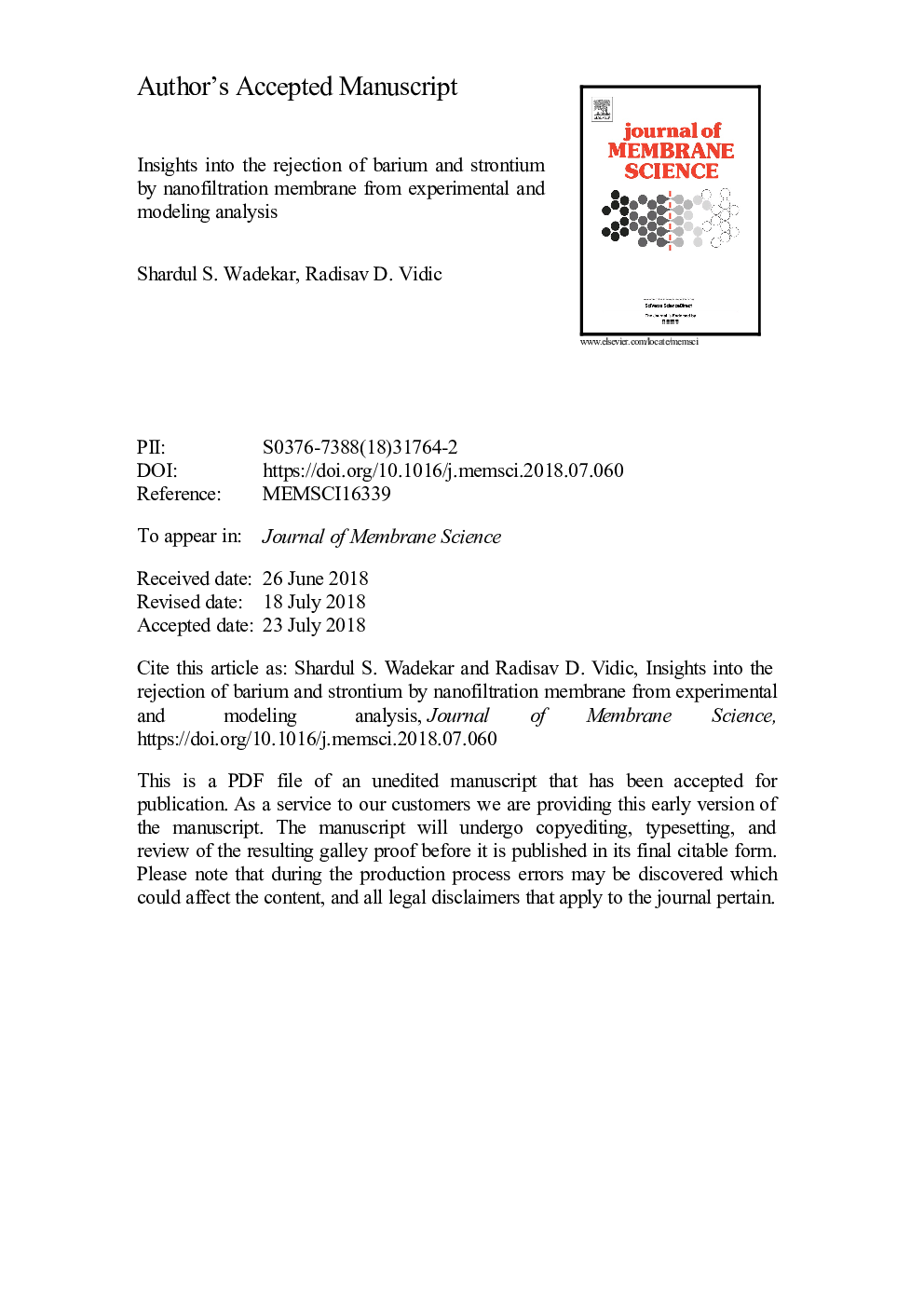| Article ID | Journal | Published Year | Pages | File Type |
|---|---|---|---|---|
| 7019642 | Journal of Membrane Science | 2018 | 35 Pages |
Abstract
A polyamide nanofiltration membrane (NF90) was systematically investigated for the rejection of barium and strontium ions from single salt solutions at a wide range of pH (2-10), pressure (5-30â¯bar) and composition (0.36-36.4â¯mM) to elucidate the underlying rejection mechanisms. Similar zeta potentials measured with both ions were explained by their similar diffusion coefficients. Point of zero charge for NF90 was always in the vicinity of 4. Modulus of volume charge density increased with increasing feed concentration and could be explained by Freundlich adsorption isotherm with competitive adsorption of barium or strontium vs. chloride on the membrane hydrophobic functional groups as the dominant factor as opposed to counter-ion binding to dissociated hydrophilic groups. Rejection of both ions decreased with pH increase and surface charge effects were dominant in determining rejection characteristics. Rejection of both ions increased with an increase in feed concentration, which is explained by the Donnan electrostatic exclusion mechanism. Spiegler-Kedem model fitted very well with the experimental data and the model parameters indicated that both ions are equally rejected at all conditions. NF90 membrane exhibited exceptional performance with 92-99.5% rejection of both ions while achieving permeability close to that with deionized water.
Related Topics
Physical Sciences and Engineering
Chemical Engineering
Filtration and Separation
Authors
Shardul S. Wadekar, Radisav D. Vidic,
